Jersey Homesteads




The Founding of Jersey Homesteads
As part of the New Deal, the government developed a plan to move workers from overcrowded urban areas to places where they could support themselves with subsistence farming. In response to this effort, Benjamin Brown, a developer and social idealist, reached out to prominent Jews like Albert Einstein to endorse his plan for a cooperative town in New Jersey. The government moved forward with Brown’s proposal and in 1933-34 purchased eight adjacent farms near Hightstown. In 1935 Jersey Homesteads came under the control of the newly created Resettlement Administration, and soon applications were opened for 200 homesteaders.
Jersey Homesteads was unique among resettlement communities. First, it was planned as a three-part cooperative made up of a farm, factory, and store. Second, it was the only resettlement town that specifically recruited a homogenous demographic: Jewish garment workers.


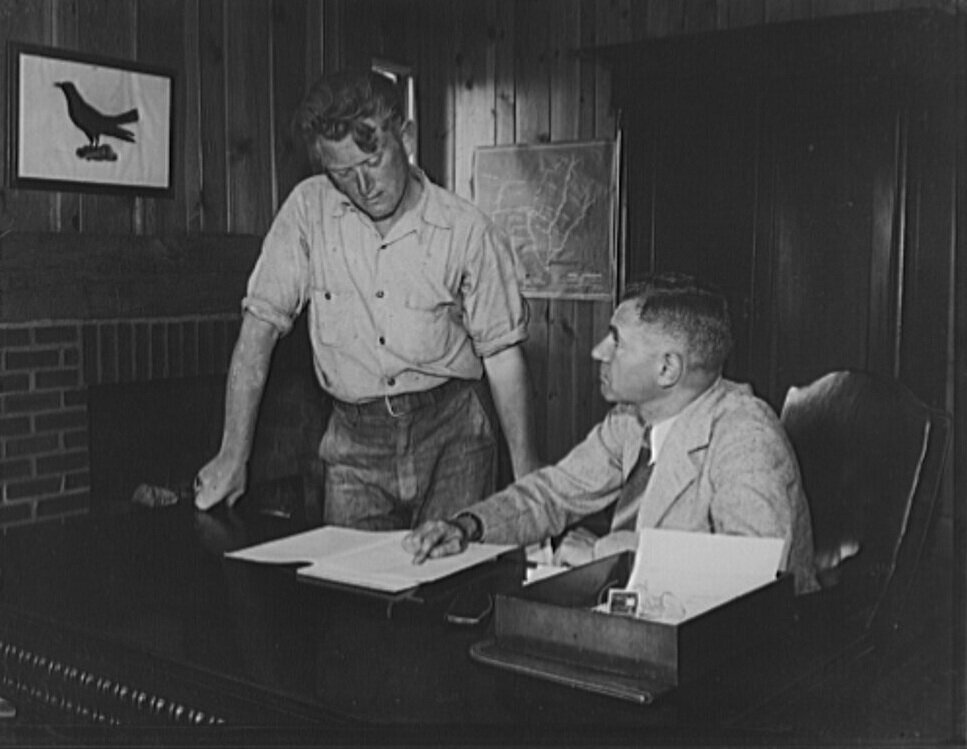

Building Utopia
A defining feature of Jersey Homesteads was the avant-garde architecture. Influenced by the Bauhaus and International Style, architect Alfred Kastner (1901–1971) and his assistant Louis I. Kahn (1901–1974), avoided any extraneous ornamentation in their design. A celebration of modern materials, they were built out of concrete block, stuccoed, and painted white. The floor-to-ceiling windows and flat roofs made them look futuristic compared to the gable-roofed farmhouses of Monmouth County. A 1938 Works Progress Administration publication explained that the homes were built “for efficient, comfortable and gracious living...equipped with modern conveniences unknown in even the better class tenements.”
Just as the socialist nature of the cooperative colony drew criticism, so did the Modernist architecture. And while the new houses had modern kitchens, parquet floors, and lots of natural light, not everyone embraced the design. Some had expected country cottages and felt that they were instead renting, what one newspaper called, “commodious garages.” The flat roofs proved problematic with accumulation of rain and snow, and the windows provided a generally bleak and muddy vista devoid of the lush greenery that has grown up around the town today.



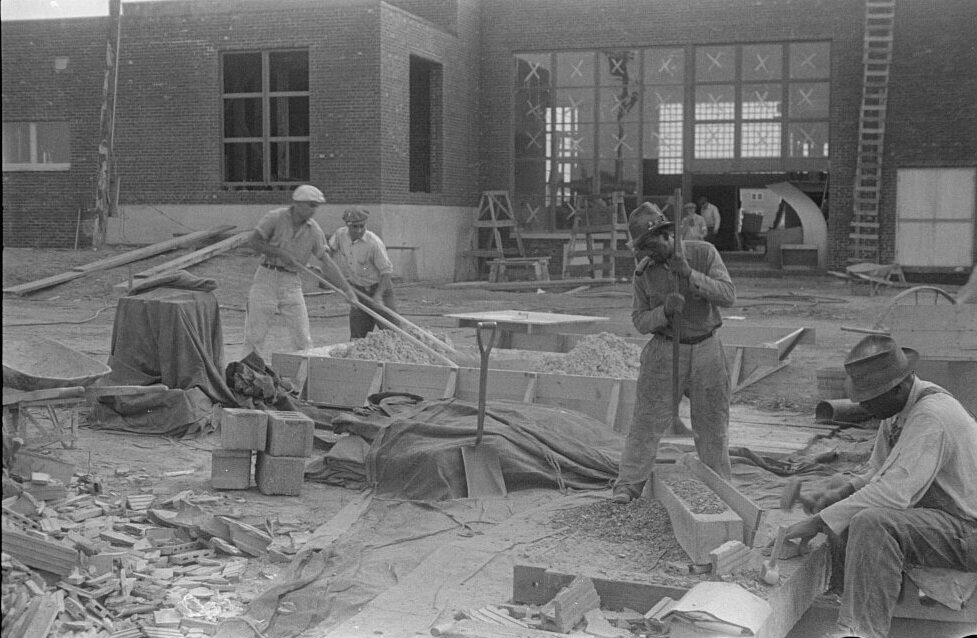
The School & Community Building
Opened in 1937, the Jersey Homestead community building and school consisted of classrooms, a library, and a gym/auditorium. Unlike most planned communities, the school—not the factory—was located in the center of town. In addition to the enormous mural by Ben Shahn and the striking doors fabricated by Otto Wester, the school housed The Seamstress, a sculpture by Lenore Thomas. The building’s central location, coupled with the art that was commissioned for the betterment of the children and community, demonstrates the value given to art and education by Kastner and the Resettlement Administration.



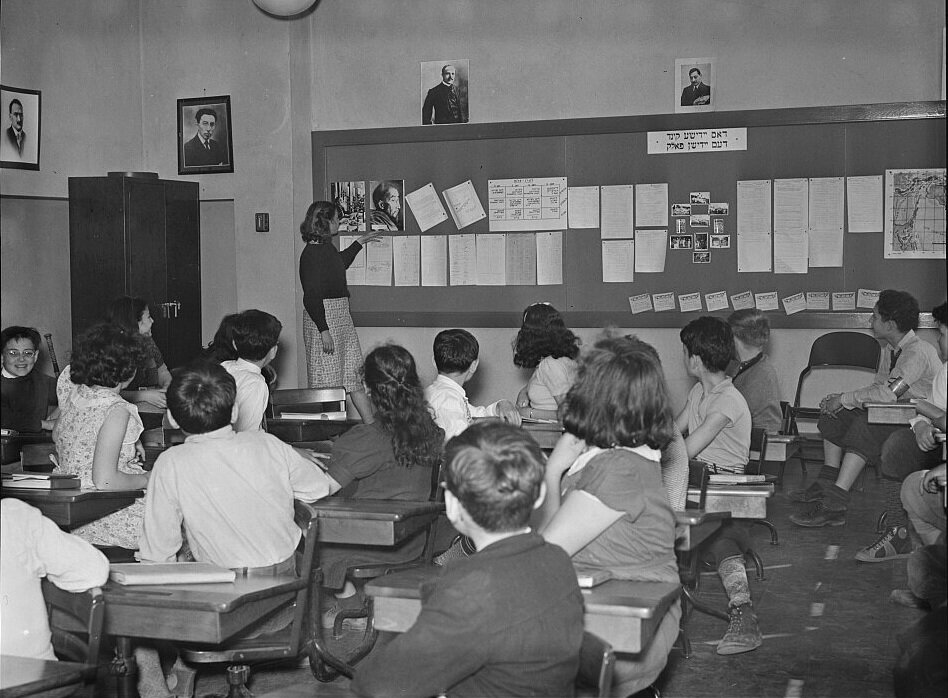

Life in Jersey Homesteads

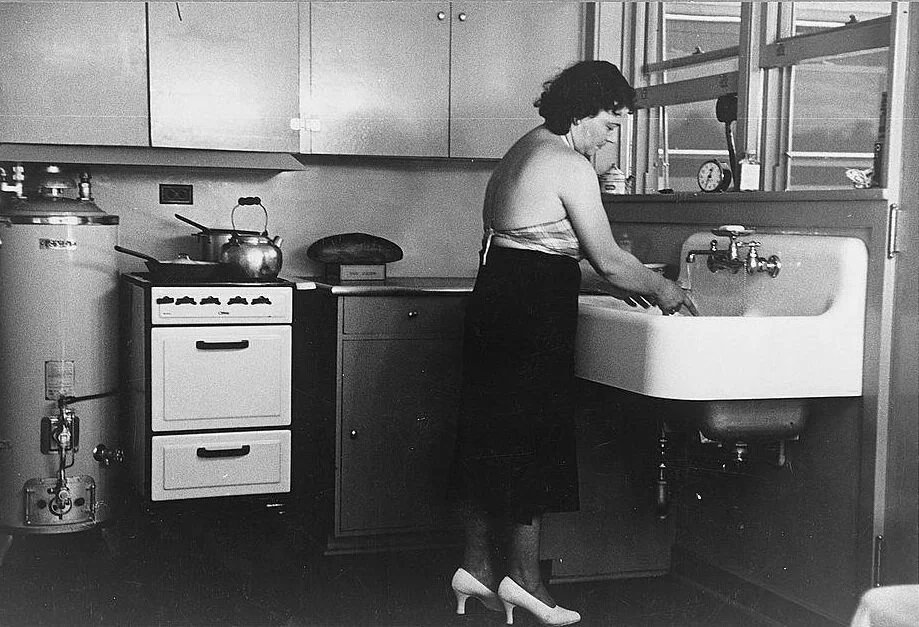


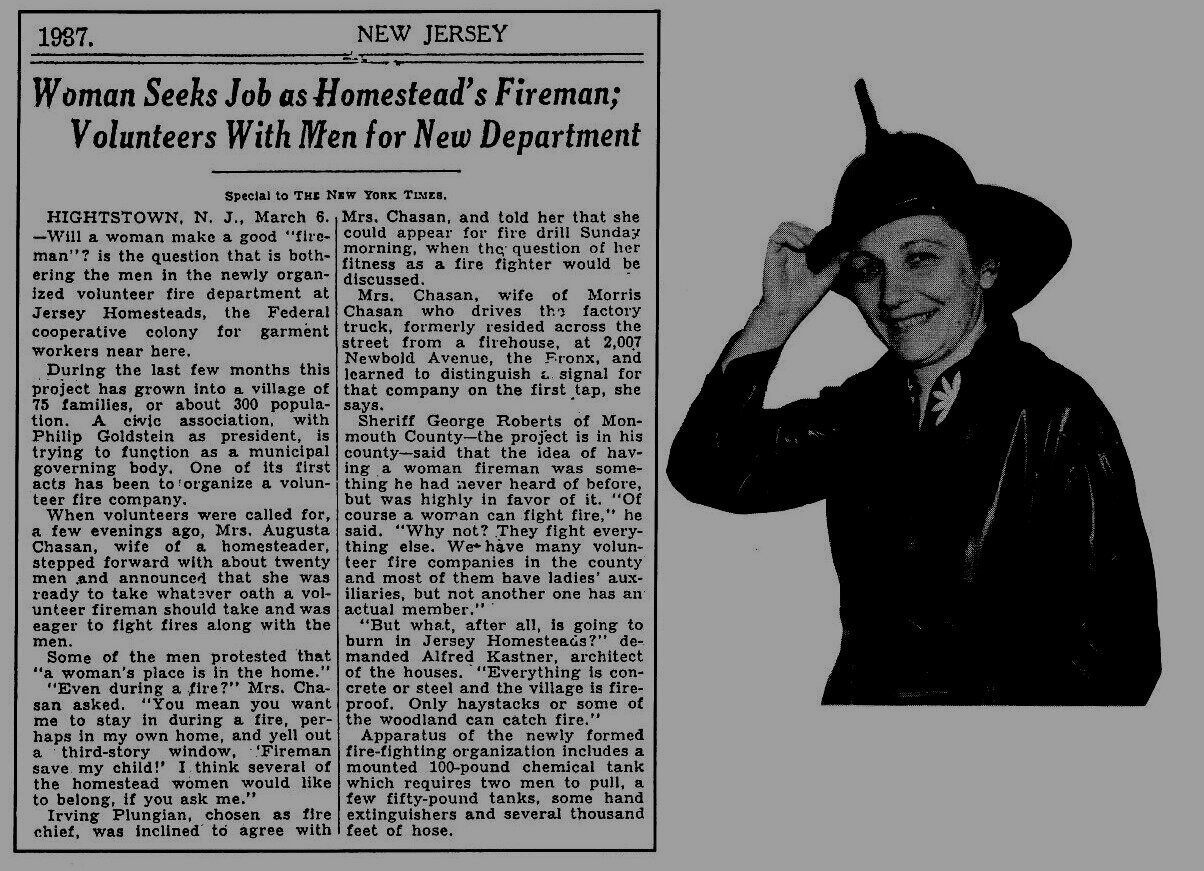

The Farm
The farm cooperative was owned and operated by the Jersey Homesteads Agricultural Association and encompassed a dairy, a poultry farm, and general crops. Conceived to support the homesteaders through subsistence farming, it eventually expanded to sell produce commercially and employed between nine and thirteen homesteaders. Determined to succeed, some farmsteaders sent their college-age children to university to study agriculture. Despite the education and assistance from the Resettlement Administration, homesteaders could not make the farm viable in the long term.
By 1940 the farm was divided into eight properties and sold to individual homesteaders.




The Factory
Like their agricultural counterpart, the Workers Aim Cooperative was founded in 1936 and owned and operated the Jersey Homesteads factory. Originally employing 100 homesteaders, the factory turned out suits, coats, dresses, and hats.
The factory struggled from the beginning. In the spring of 1937 Benjamin Brown reorganized factory management and created Tripod Coat and Suit, Inc. Named for the triple cooperative, Tripod designed and produced garments to be advertised and distributed to cooperative outlets nationally. Despite several loans from the federal government and Benjamin Brown, the Farm Security Administration (which had replaced the Resettlement Administration) acknowledged complete failure of the factory in 1939 and eventually sold it to Kartiganer & Co., a hat manufacturer.
Over the years, different manufacturers have operated out of the factory building including the Richard Allen Button Factory, and then Geodesic Domes, Inc., which made parts for the sphere-shaped homes. In later years it was home to the Eleanor Gallery (named for Eleanor Roosevelt) and the studio of Jonathan Shahn.


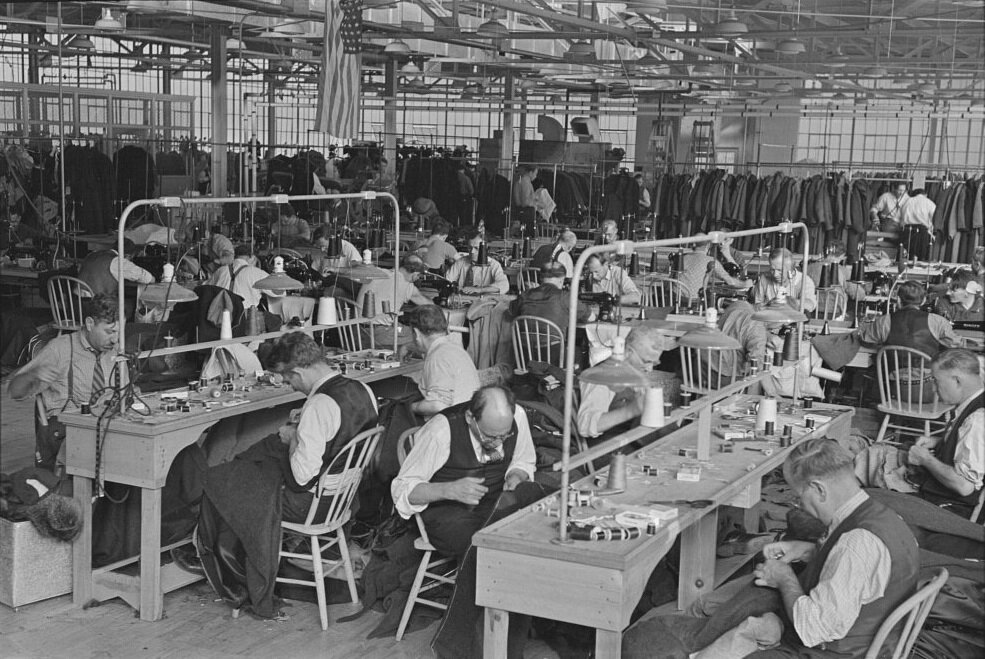




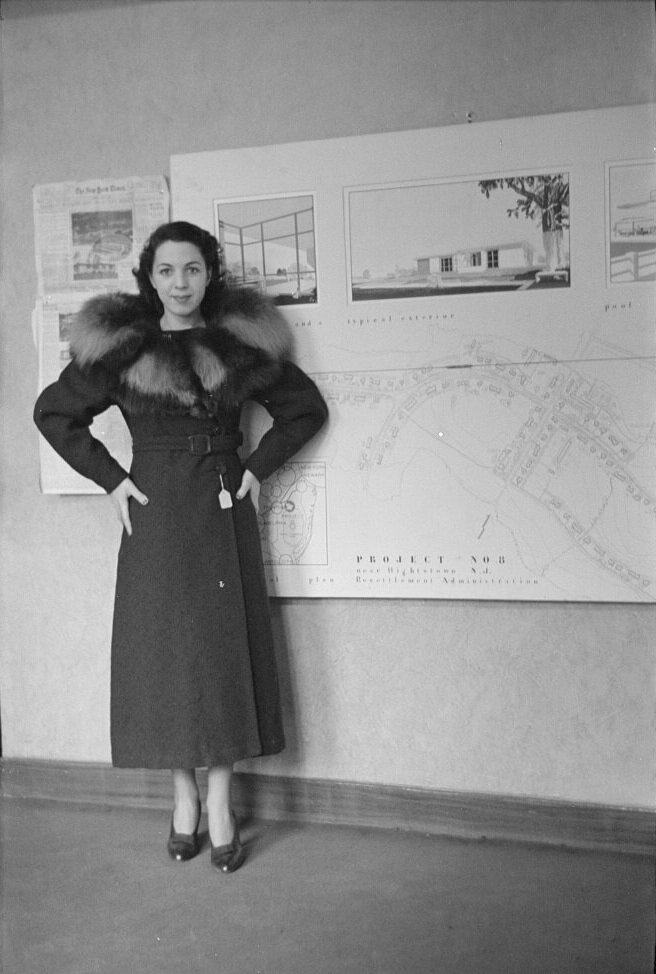
The Failure
Within a short time all of the Jersey Homesteads cooperatives had failed. Inexperienced management and disagreements between homesteaders, coupled with the bleak economic market, proved too much for the cooperative dream. Only the cooperative store was somewhat successful, surviving into the 1940s. The failure of the factory in 1939 meant the government could not fill the remaining 80 newly-built homes and began renting to individuals outside of the cooperative project. Ben and Bernarda Shahn were among the first non-homesteaders to move in.
The federal government continued to own the homes, renting them at $14 and $17 a month (about $250 to $300 in today’s dollars). In 1947 the homes were made available for sale to the residents, ending the government’s investment in the community. Despite, or perhaps because of, the hardship and disappointment around the cooperative failure, a close-knit community formed. Many were determined to make this rural farmland their home and remained for generations.
While the entire nation mourned the death of President Roosevelt in 1945, the town of Jersey Homesteads felt it acutely. Without Roosevelt they felt certain there would be no Jersey Homesteads. When GIs returned home from war in 1946, it was not to Jersey Homesteads but to the newly named Roosevelt, NJ.
Roosevelt remains unique among other New Deal communities in that so much of its original physical character has been preserved. It was added to the National Register of Historic Places in 1983.

